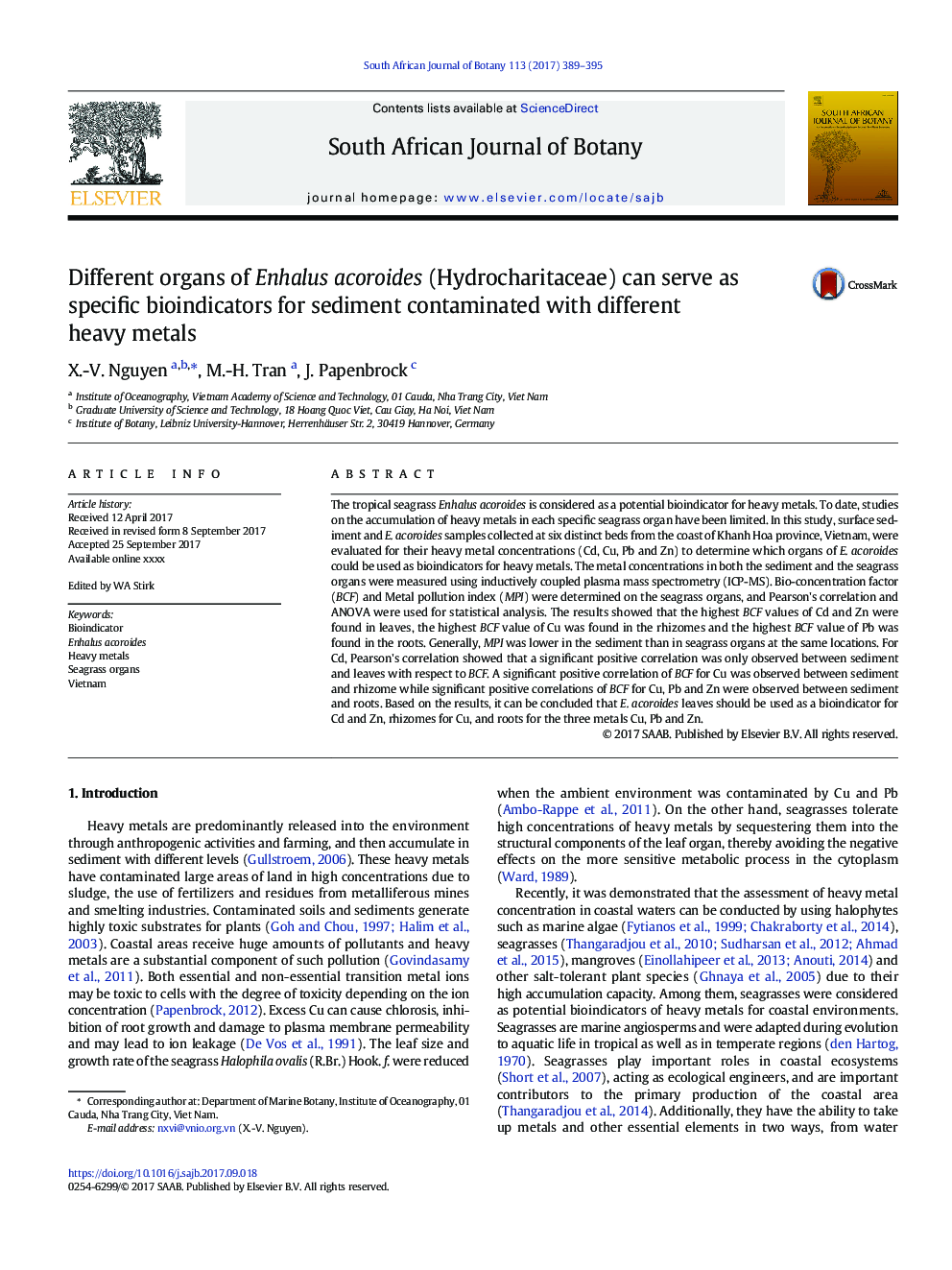| کد مقاله | کد نشریه | سال انتشار | مقاله انگلیسی | نسخه تمام متن |
|---|---|---|---|---|
| 5762926 | 1625145 | 2017 | 7 صفحه PDF | دانلود رایگان |
عنوان انگلیسی مقاله ISI
Different organs of Enhalus acoroides (Hydrocharitaceae) can serve as specific bioindicators for sediment contaminated with different heavy metals
دانلود مقاله + سفارش ترجمه
دانلود مقاله ISI انگلیسی
رایگان برای ایرانیان
کلمات کلیدی
موضوعات مرتبط
علوم زیستی و بیوفناوری
علوم کشاورزی و بیولوژیک
علوم زراعت و اصلاح نباتات
پیش نمایش صفحه اول مقاله

چکیده انگلیسی
The tropical seagrass Enhalus acoroides is considered as a potential bioindicator for heavy metals. To date, studies on the accumulation of heavy metals in each specific seagrass organ have been limited. In this study, surface sediment and E. acoroides samples collected at six distinct beds from the coast of Khanh Hoa province, Vietnam, were evaluated for their heavy metal concentrations (Cd, Cu, Pb and Zn) to determine which organs of E. acoroides could be used as bioindicators for heavy metals. The metal concentrations in both the sediment and the seagrass organs were measured using inductively coupled plasma mass spectrometry (ICP-MS). Bio-concentration factor (BCF) and Metal pollution index (MPI) were determined on the seagrass organs, and Pearson's correlation and ANOVA were used for statistical analysis. The results showed that the highest BCF values of Cd and Zn were found in leaves, the highest BCF value of Cu was found in the rhizomes and the highest BCF value of Pb was found in the roots. Generally, MPI was lower in the sediment than in seagrass organs at the same locations. For Cd, Pearson's correlation showed that a significant positive correlation was only observed between sediment and leaves with respect to BCF. A significant positive correlation of BCF for Cu was observed between sediment and rhizome while significant positive correlations of BCF for Cu, Pb and Zn were observed between sediment and roots. Based on the results, it can be concluded that E. acoroides leaves should be used as a bioindicator for Cd and Zn, rhizomes for Cu, and roots for the three metals Cu, Pb and Zn.
ناشر
Database: Elsevier - ScienceDirect (ساینس دایرکت)
Journal: South African Journal of Botany - Volume 113, November 2017, Pages 389-395
Journal: South African Journal of Botany - Volume 113, November 2017, Pages 389-395
نویسندگان
X.-V. Nguyen, M.-H. Tran, J. Papenbrock,